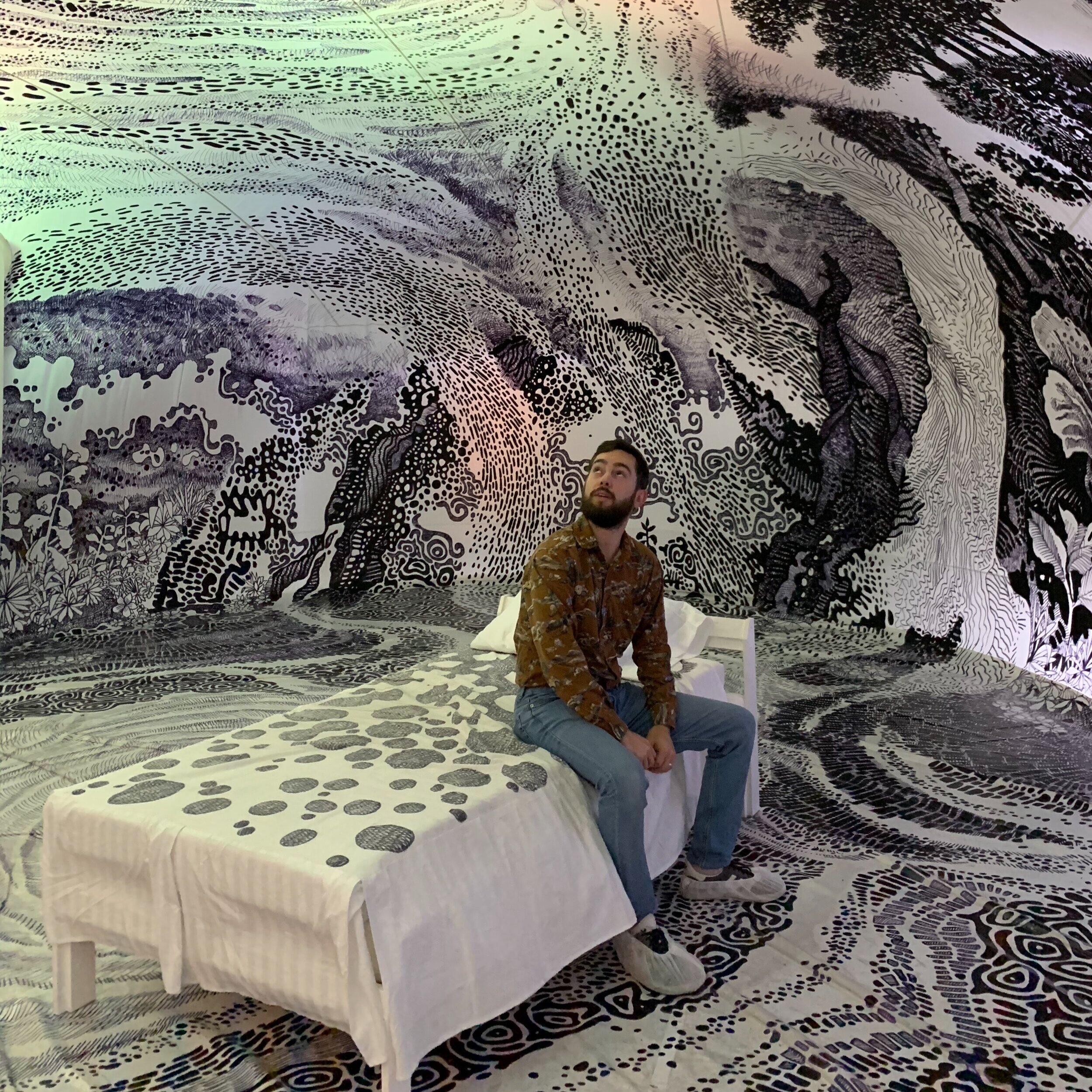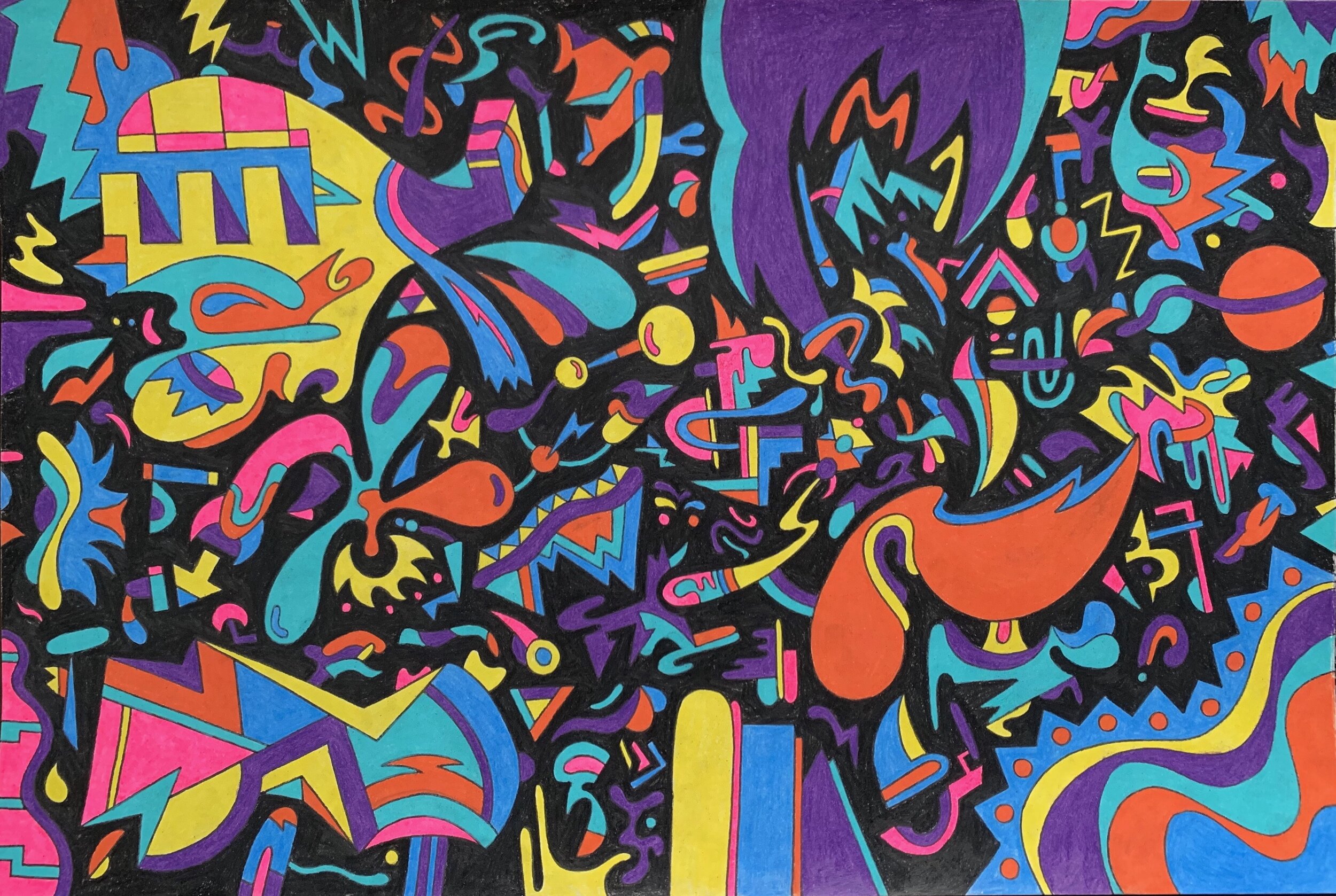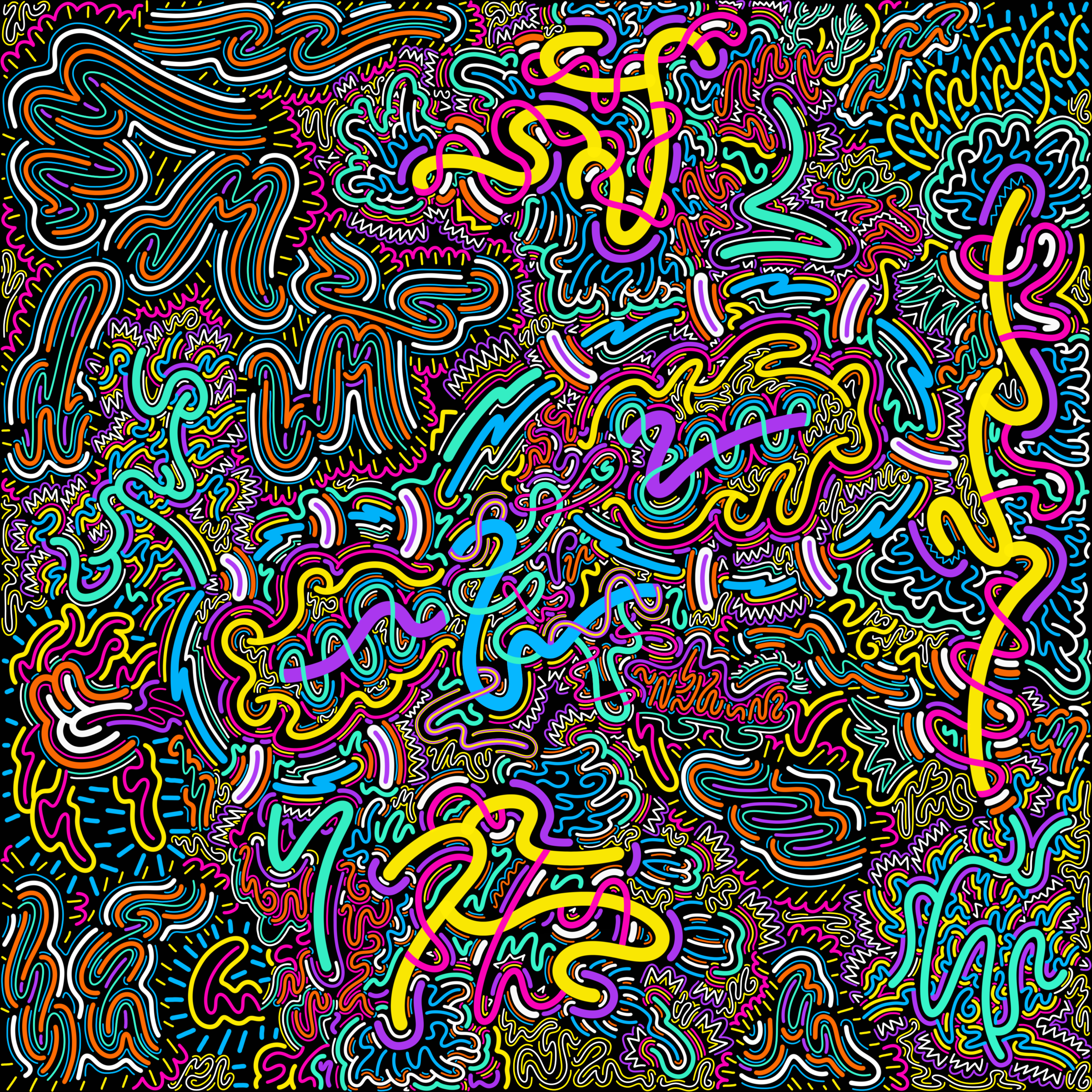INTERVIEW | Dan Petersen
10 Questions with Dan Petersen
Dan Petersen is a visual artist from the great state of New Jersey. His love for the psychedelic has led to largely abstract works that incorporate vibrant colors, trippy patterns, and dynamic textures. He has painted outdoor murals, has had his work exhibited in galleries and museums, and regularly makes commissions for a wide-ranging variety of clients.
Dan Petersen Portrait
ARTIST STATEMENT
Having always naturally gravitated to the abstract, Dan Petersen's artistic goals - while constantly evolving - are focused on embracing psychedelia with open arms and marrying it with vibrant color schemes and patterns. Each piece's intent is to challenge the viewer while also allowing for an abstract simplicity, ultimately leaving it up to the viewer to decide how the piece should be interpreted. While creating, Dan's number one priority is not just to make something new and fresh, but to stretch his own belief in what is possible while taking inspiration from his surroundings.
INTERVIEW
When did you start experimenting with painting, and when did you decide to become an artist?
I’ve pretty much always painted to some degree, as far back as I can remember. Making art and “becoming” an artist wasn’t a decision as much as just something I have always done in some capacity. For years, I mainly stuck to colored pencils and digital art, but in the last 2-3 years, I’ve rediscovered my love of painting, and have largely based my practice around acrylic paint.
What was the biggest lesson you learned while trying to become an artist?
There are so many important lessons, and I feel like I’m constantly learning new ones. But if I had to pick one, it’s being open to feedback. Myself included, I so often see creative people get defensive and act stubbornly when faced with the opinions and feedback of others - whether it’s coming from prospective buyers and clients, friends, collaborators, or even just in the comments section. While it’s important to maintain the integrity of your work, it’s also key to step outside of yourself and see what the outside world is digging and what they’re not feeling as much. There are no hard rules with this, but staying defensive is the antithesis of growth, and at least for me, I’m always trying to challenge myself and absorb input, regardless of who it’s from.
It’s Electric, Acrylic Paint on Canvas, 30 x 48 inches, 2021© Dan Petersen
We’re All Eccentric, Acrylic Paint on Canvas, 16 x 16 inches, 2020 © Dan Petersen
Psychedelia has a considerable part in your art. Why do you use this visual language? And why do you find it so fascinating?
When I was a teenager, I was mesmerized by the hippie counterculture of the 60s and 70s. Whether it was found on album covers and tie-dye shirts, or concert posters, the aesthetic really appealed to me. The vibrant colors and trippy patterns sucked me right in. Psychedelia follows so few formal rules, and combined with the level of detail so often found in this genre of art. It has given me a venue through which I can very freely explore and express myself.
How important is the perception of the viewers of your work? Do you want them to get lost in your intricate designs?
The perception of the viewers is everything. The more lost they get in my work, the better! When I’m making a fully abstract piece, a big priority for me is to create a world in which the shapes, lines, and colors are familiar, but when combined together, it becomes something entirely new and completely up for interpretation.
My Eyes!, Digital art, 3000 x 3000 px, 2020 © Dan Petersen
What about the colors you use? You seem to have a specific palette that you always use in every work. Do these colors have any particular meaning?
For the last couple of years, I've been using the same general color palette, more or less. Much of the influence behind this is a healthy mix of retro style and psychedelia. I like the poppy-ness and vibrancy of the colors I use, and a big goal, whenever I dive into a new piece, is to make sure it can catch the viewer's eye immediately.
What about your inspiration? What artists influence and inspire your work the most?
There are far too many to name, but of all time: MC Escher, Peter Max, Keith Haring. Artists from more recently who inspire me on a near-daily basis are DABSMYLA, Dale Chihuly, Hueman, Eric Shaw, Super Mundane. These artists have their own immediately identifiable, distinct style and have so much range and use color and shapes in such beautiful ways.
How would you describe your creative process? Where do you start when creating a new painting? Any aspects do you pay particular attention to?
Much of my work is almost fully improvised in the sketching stage. I go into each piece with a general idea of how I want to occupy the space and use reference images for certain parts. These images are in a photo album on my phone and could be anything from a screenshot of something I saw on the Internet to an out of focus photo I took of something that caught my eye while I was stopped at a red light. By the time I begin painting, I assign each shape a color and then essentially play a very long, taxing game of color-by-number.
Triplets, Acrylic Paint on Canvas, 20 x 24 inches, 2021 © Dan Petersen
Not Enough Time in the Day, Acrylic Paint on Canvas, 20 x 24 inches, 2021 © Dan Petersen
What do you think about the art community and market? And how did your perception change over the last year due to the pandemic?
My background is in literary management. I used to work with screenwriters and directors in film and TV, and from working in that area of the entertainment industry, I hugely benefited from understanding how to marry art and business and not feel gross about it. One informs the other, and I find the same to be true in the visual art world. The pandemic gave me more freedom to experiment and see where certain bold stylistic choices would take me. It also showed me that even despite a global pandemic and the economic fallout that came with it, people were still very eager to buy art.
The City is Awake, Acrylic Paint on Canvas, 20 x 20 inches, 2020 © Dan Petersen
What are your thoughts on digital presentations, like fairs and exhibitions, for artists? Do you think these are good opportunities for young artists like yourself?
I think any way an artist can get their work seen is great. Not every opportunity and venue is for everyone, so the big question to ask is: What are the right paths for me to pursue?
Finally, what are your plans for the future? Any exciting projects, exhibitions, or collaborations you are looking forward to?
Aside from some commissions, I have a couple of mural projects in the works that I'm getting super excited about. I've also been really into painting on handmade recycled paper lately, and have been working on a new series of smaller works on paper. There are a few other things in the pipeline, but it's too early to say anything!

























